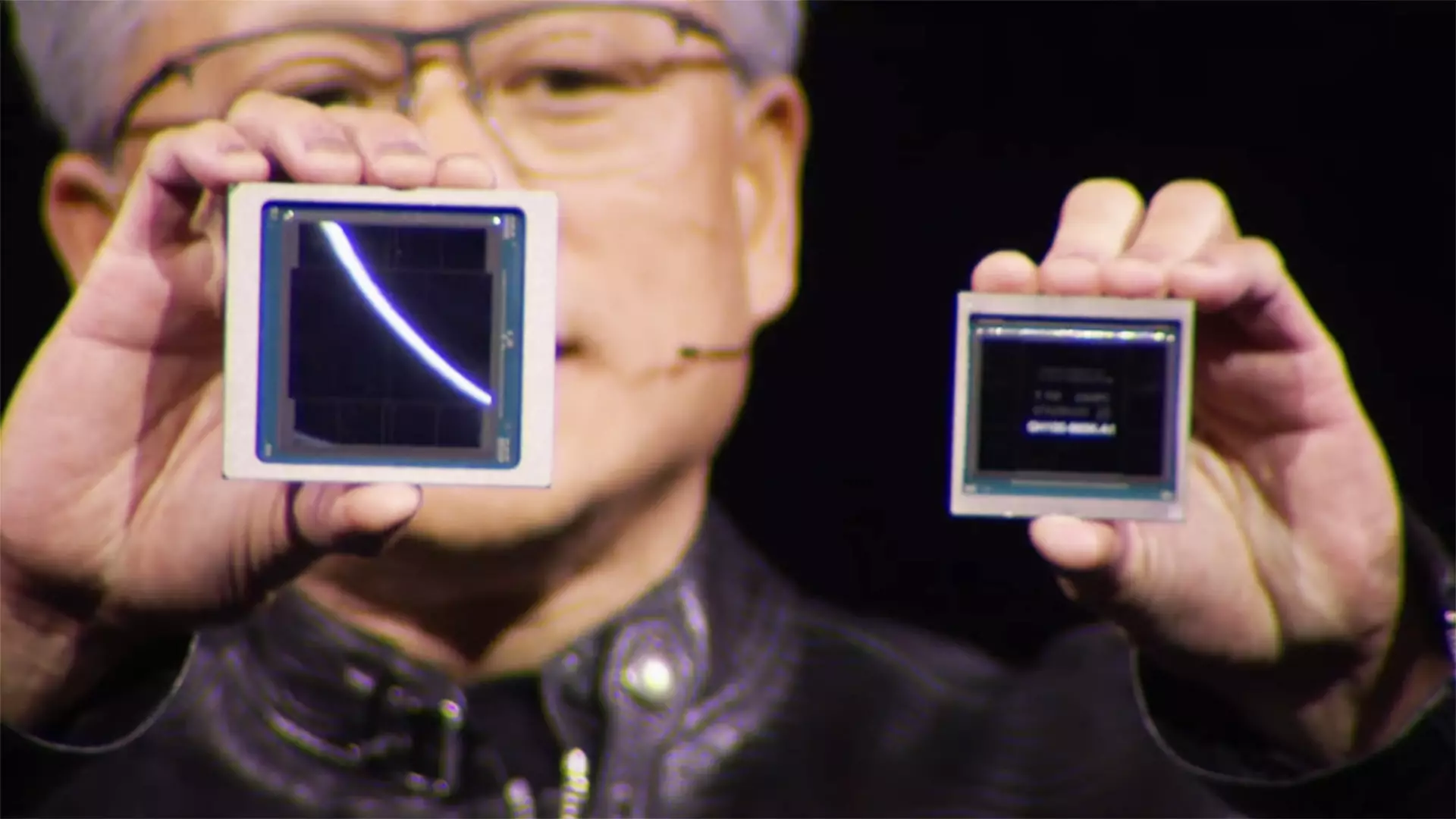The landscape of technology is rapidly evolving, and with it comes a new set of challenges and considerations for national security. The latest narratives surrounding Nvidia’s advanced AI chips illustrate a deepening intersection between technological innovation and geopolitical tension. When the development and distribution of such cutting-edge technology begin to resemble plotlines from spy thrillers, it’s clear that the stakes are extraordinarily high.
The Rise of AI Chips and Their Implications
Nvidia’s AI chips are not merely components of higher-performing computing systems; they represent the pinnacle of modern technological prowess that can redefine industries and warfare alike. However, as the U.S. grapples with the looming specter of technological espionage, there’s a palpable fear that rival nations, particularly China, could leverage these innovations against American interests. This concern has led to bipartisan discussions around a proposed bill by Representative Bill Foster designed to implement stringent tracking mechanisms for these chips.
The proposed legislation aims to ensure not just the monitoring of distribution but also the potential remote disabling of chips if they are identified in jurisdictions deemed hostile. This could mean that if an AI chip is tracked to a restricted area, it may be rendered ineffective. Imagine the implications: chips that could be ‘switched off’ by their country of origin, effectively weaponizing technology through control rather than conflict. While it sounds technologically feasible, one must consider the various ethical implications and the potential for a global tech cold war.
Export Controls: The Divide Between Nations
U.S. legislators have historically leveraged export controls as a means to curb the flow of sensitive technology to rival nations. This strategy, however, has encountered a novel complication in the case of AI. Back in 2022, policymakers initiated a more rigid export regime that categorized nations into tiers—the highest tier being those freely allowed to access U.S. technology down to those with zero access. Yet, the shifting sands of international relations suggest these systems are not foolproof.
Moreover, the urgency for such measures reflects the high-stakes competition between the U.S. and China in the realm of artificial intelligence. With China allegedly on the cusp of exponential growth in AI capabilities, the feasibility of making it increasingly difficult for them to acquire advanced chips may not be enough. The reality is that rival nations are continuously innovating their technological means, and bypassing U.S. restrictions may soon become a matter of necessity rather than desire for nations like China.
Nvidia’s Position in the Economic and Political Ecosystem
For a behemoth like Nvidia, which currently enjoys a remarkable position as one of the world’s leading technology companies, these restrictions and forthcoming legislation could introduce significant challenges. The company has already communicated these hurdles to the market, estimating a potential fallout of nearly $5.5 billion due to restrictions limiting their reach. This harm to business viability raises questions about whether political agendas can justifiably trump the success and innovation of a private enterprise.
Additionally, Nvidia’s CEO, Jensen Huang, has publicly expressed concerns over these restrictions while still advocating for the dissemination of American technology globally. Yet, even as government entities strategize ways to enforce compliance with export bans, companies like Nvidia find themselves in a tricky spot: they must balance the pursuit of profit and progress with navigating the sensitive geopolitical implications of their products.
Ethics and Feasibility: Can Technology Really Be Controlled?
Critical questions arise around the ethics and feasibility of remote tracking and disabling technology. If a country has the technological capability to implement tracking software within chips, can such systems truly be secure? Moreover, establishing a failsafe mechanism that would not only work but also withstand attempts to bypass it is another hurdle. Wondering whether such measures could genuinely offer protection or end up as an expensive façade is at the forefront of these discussions.
While it is easy to paint a grim picture of espionage via advanced technology, the narrative must pivot to the innovative potential that exists in these challenges. Instead of merely prohibiting technology from reaching rival nations, how can global collaboration redefine what it means to compete? Perhaps this crisis could lead to a new era of ethical technology that prioritizes collaboration over conflict, fostering advancements that ensure a balance of power rather than a breakdown of systems.
Ultimately, while the U.S. attempts to erect barriers against technological proliferation, it is essential to acknowledge that such tactics may prove as much hindrance to innovation as they do to potential threats. The future should not simply dwell on safeguarding what is deemed ‘ours’ but could herald a more cooperative approach to a borderless digital future.

